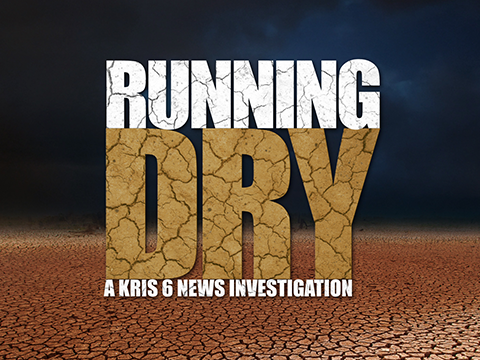Port Aransas is home to many, and so much.
With scenic nature views and a bustling shipping channel, there's a lot going on in this little city on Mustang Island.
But a new proposal to deepen the Corpus Christi Ship Channel is ruffling a few feathers.
Ken Teague is a coastal ecologist who has studied the Texas and Louisiana coasts for more than four decades.
He's also keeping an eye on the dredging of the ship channel.
"For me, an important one is the potential impacts on seagrass with some of the dredge material," said retired coastal ecologist Ken Teague.
Now retired, he lives in Austin and keeps an eye on our coastal habitats.
His concerns are that there doesn't seem to be a whole lot of assurance in the draft Environmental Impact Statement.
That study predicts 3.5 inches of storm surge along Port Aransas, but it also identifies a "hot spot" along Harbor Island that could see as much as 12 inches. Add on 2 additional inches from tidal changes, and this could spell trouble.
In fact, dozens of people have shared their concerns about more storm surge with the U.S. Army Corps of Engineers in the wake of Hurricane Harvey.
Back in 2017, Hurricane Harvey created a storm surge of more than 5 feet in Port Aransas, and here's why any more could be a problem: we're vulnerable here in the Coastal Bend because we're so close to the Gulf of Mexico.
As a storm passes, that storm surge, or abnormally high-water level, can inundate our coastal communities, and as little as 1 foot of water can move a car, but 2 feet of moving water can sweep away an SUV or even a lifted pick-up truck.
"My impression of all this storm surge stuff is that the model -- that there could be as much as 14 inches additional storm surge above and beyond what we saw during Harvey," Teague said.
Where does this prediction come from? A models that predicts the future storm surge based on two "synthetic category 4 storms".
The authors used a database from Louisiana State University called SURGEDAT. In this figure, you can see only one of these storms is from the 21st century – Don, in 2011 -- and the channel has undergone significant dredging since then.
So were the two synthetic hurricanes modeled off these storms? We don't know -- the details are not given in the draft study.
Our team of meteorologists thinks there are better storms to use in such a model.
For instance, in 2020, Hurricane Hanna, which was a Category 1 storm, destroyed Bob Hall Pier.
The pier's gauge measured a maximum storm surge of 6.24 ft. The gauge at Port Aransas measured a maximum storm surge of 3.16 ft.
It's all about the wind direction: The strong counterclockwise winds in a storm will push water toward or away, depending on the position of the storm in relation to a location.
As meteorologists, we think the conclusions about storm surge in the draft study could be inaccurate.
I asked the mayor of Port Aransas if the city had concerns about the proposed work.
"We just want to make sure it's done right,” said Port Aransas Mayor Wendy Moore. “So that we don't have any negative effect to our community and the future of Port Aransas."





